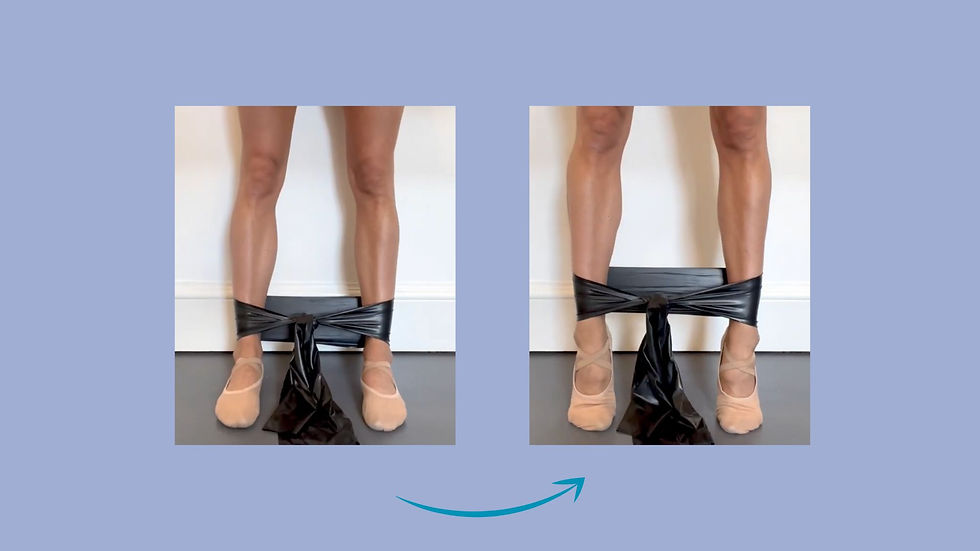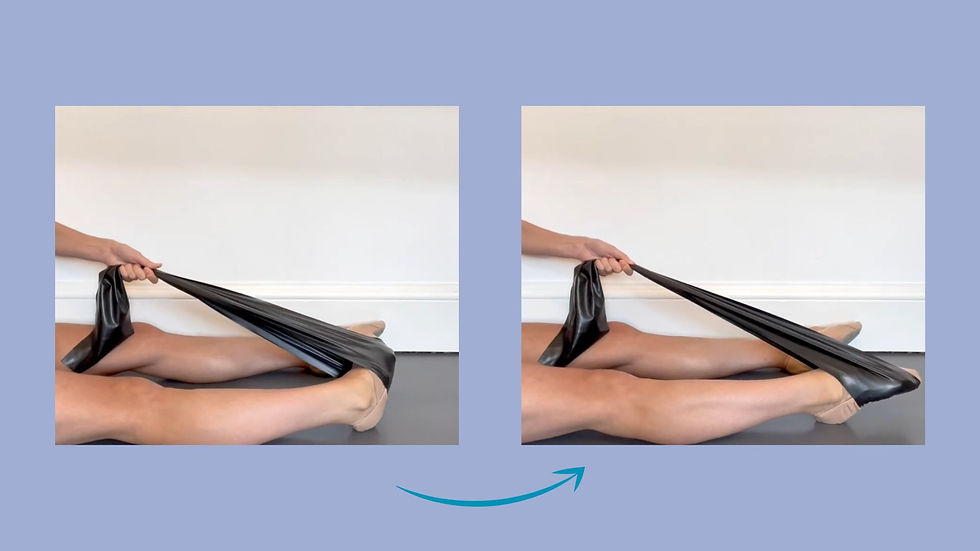The 5 Best Exercises To Stop Sickling

One of the most common questions I’m asked is how to stop the feet from sickling, either when pointed, on demi-pointe or (more dangerously) en pointe. A sickled foot is one that curves inwards, rather than keeping a straight alignment from the ankle to the 2nd toe, and is deemed “poor technique” in ballet. Instead, dancers work to keep the foot completely straight, or in some cases, winged outwards.
Winging or fishing the foot refers to an outwards curve of the foot and many dancers and teachers believe this improves the line of a dancer’s leg.

Why do we sickle our feet?
The ankle naturally has more mobility in the joint curving inwards than it does curving outwards and this becomes apparent the more we extend the ankle/point the foot. This is particularly noticeable when en pointe in a turned out position as for many dancers the weight moves from the big toe and second toe to the baby toes. If the dancer lacks the strength or doesn’t have the mobility to bring their alignment back over the centre of their foot, it is very easy to roll the ankle and fall off pointe from this position, so crucial that it’s corrected.
To increase both the strength and mobility of the ankle, here are the 5 best exercises I would recommend.
1. Standing on both feet, place either a tennis ball or a Pilates ball between the lower legs, just above the ankles. Keeping the feet parallel, rise up onto demi-pointe and back down again, without dropping the ball and checking that your alignment is directly over the 2nd toe and big toe. Repeat with 20 slow rises. This can also be done by en pointe. You’ll know if you start to sickle to feet because the ball will drop.

2. Wrap a theroband/power band around your ankles and open out the legs slightly in a parallel position until you feel resistance in the band. Rise up and down slowly keeping the feet and ankles well-aligned. This will strengthen the muscles on the outer side of the tibia. Repeat with 20 slow rises.

3. One of my personal favourite exercises. Sitting on the floor, wrap the theroband/ resistance band around the outer part of your foot, hold the theroband in the opposite hand and then open the legs slightly so that you can pull the foot into a sickled position. Without moving your leg or your hand, use the strength of the ankle to pull against the band until the foot is correctly aligned, then slowly release the full back to a sickle. Repeat 20 times on each foot.

4. Wrapping the foot: we’re now going to work on the mobility of the ankle by starting with a “wrapped” cou de pied position. The toes should wrap around to the back of the leg, while the heel stays at the front. Once you’ve found this position (which may take a while depending on your ankle flexibility), slowly draw the foot up the leg until you reach the knee and then slowly lower back down. Repeat 15 times on each foot.

5. For our last exercise we have a combination of both strength and mobility. This exercise will also help if you’re looking to work on winging/fishing the foot. Stand in an arabesque à terre position with the foot straight. Drop the heel down to the floor whilst keeping the foot pointed. Lift the foot slowly off the floor by a couple of inches, locking the winged position so that the foot doesn’t drop back to a straight alignment or even a sickled alignment as soon as you lift it. Repeat slowly 10 times on each leg. I would recommend using a mirror to help you monitor the foot during this exercise.

Like with most things in life, the key to success is consistency, so for best results add these 5 exercises to your daily routine for AT LEAST a month. They should all be performed slowly with control.
I would love to see your results, so please send your before and after shots to @talkballettome or @myballetcoach on Instagram, Facebook or Twitter
Comments